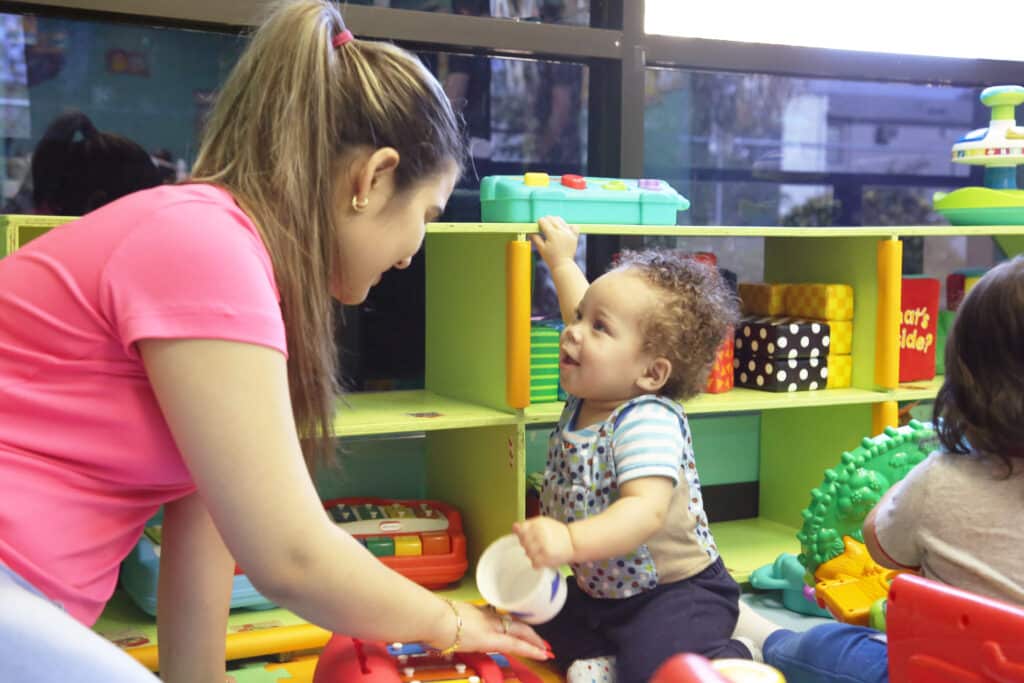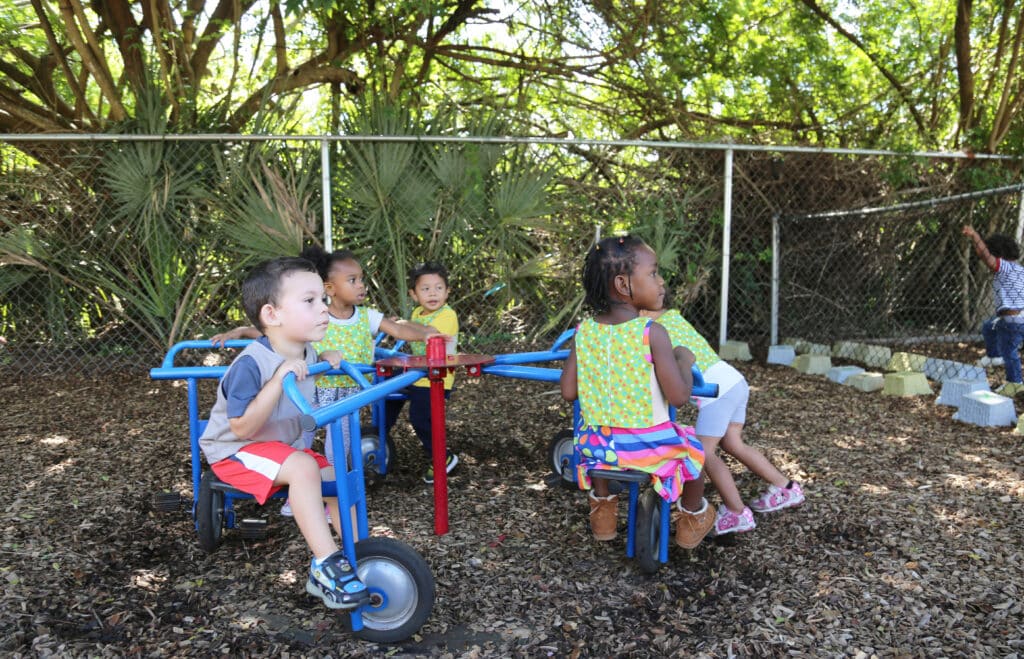Does LENA Grow work? It’s a simple question, but one that takes a lot of data to answer. Several recent independent program evaluations show that LENA Grow is effective at improving:
- Instructional quality (CLASS® scores).
- Language, literacy, and social-emotional outcomes (TS GOLD® scores).
- Classroom language environments (conversational turns, as measured by LENA’s “talk pedometer” technology).
That’s all quantitative data. It’s hard numbers, designed to be measured and graphed.
What about qualitative data? Behind all the statistics are the actual people completing the program, the teachers themselves. How do they describe LENA Grow? What do they say about the program’s impact? What, in their own words, is LENA Grow all about?
Recently, researchers from the University of Hartford completed a thorough qualitative evaluation of the LENA Grow program in Hartford, Conn. This blog sheds light on nine fundamental insights drawn from the Hartford report. These are real teachers giving their real impressions of LENA Grow, a professional development program designed to make every interaction count in early childhood education.
“This report expands our knowledge of Grow’s effectiveness by offering invaluable qualitative insights,” said Dr. Jill Gilkerson, LENA’s Chief Research and Evaluation Officer. “We get so used to working with numbers at LENA — but that’s only half the story. We’re delighted to see the heart of the impacts at Hartford from the teachers’ perspectives through these extensive interviews.”
Teachers are engaged and reflective during coaching and are actively involved in their instruction.
According to the report, LENA Grow helps teachers use data from each child to find peak talk times and kids needing more interaction. This leads to focused help, like one-on-one time or pairing with a more talkative peer. Teachers set big goals and track progress with LENA Grow. The data helps teachers address each child’s needs by finding challenges and learning from daily experiences.
One lead teacher said, “Me and my team would set a goal: ‘In 30 minutes to one hour — how many connections or conversational turns can we make with that one child?’ We made almost 29 connections for one child, one-to-one! It was fascinating!”
By deliberately tailoring their instructional strategies with the information gained from their coaching session, teachers were able to increase the children’s conversational turns. They also managed to illuminate their own self-discovery and reach their common shared goal of creating enriched language environments.
Teachers’ ownership of their own learning, planning, and evaluation readily becomes teamwork.
Because coaching was seen as an aid by Hartford teachers instead of a hindrance, it made for easier collaboration between their teams. One administrator highlighted everyone’s commitment to integrating coaching into their routines.
“It’s what you do to aid in the process,” they said. “You have to find the time to meet with the coaches, and the teachers are all in it together. We had to invest time wisely to make it work. I was able to describe the data, and the teachers were excited about coaching. We just went at it.”
One teacher who was also a participating parent gained a different perspective. She remembers the ongoing planning and discussions she had with her co-teacher, which persisted beyond coaching sessions and well after the program concluded.
“Me and my co-teacher would talk about it at nap time,” she said. “How to get children more engaged, or split it up, how many times should we talk with this child and we would check on each other; after coaching was over, we continued to check in on how children were talking and the next day we would follow up on children who weren’t speaking.”
Teachers were able to see their progress and saw coaching as a valuable support that helped them learn new skills.
A toddler classroom teacher with over four years of classroom experience enthusiastically adopted communication strategies learned in coaching sessions. This allowed her to foster a back-and-forth dialogue with the children as opposed to just talking to them. She said, “When we had the coaching days, [the coach] really gave me tips on how to get those kids to talk and it worked. She would give me the tip and next week I would see improvement.”
Teachers are more thoughtful and intentional in understanding and valuing each child’s language experience and customizing strategies to meet the unique temperament, behavior, and learning styles of each child (i.e., “meeting them where they’re at”).
Hartford teachers can attest to the multifaceted efficacy of LENA Grow. A teacher with extensive experience in the field shared how the 14 Talking Tips helped her target specific interactions: “Once we were given talking tips, I would see what area I am lacking in and used those talking tips at that time. For instance, at the changing table, you can comment on what they’re wearing and comment on what they are saying — it helped me during times that I saw I needed more interaction with the kids.”
Another teacher addressed the instances of autism-related challenges and how she saw improvements in the child: “In my class, I had a child with autism, and he used to have tantrums. I kept repeating words back to him, using hand signals, and his [disruptive] ‘behaviors’ went down.”
Teachers delight in seeing improvement in children’s interactive talk, which in turn validated their efforts, and further increased their enthusiasm, commitment, and use of program practices.
An assistant teacher with over two decades of experience celebrated the social-emotional growth resulting from increased conversations and attention from caregivers.
“It helped a lot of children,” she said. “It really did get them to say something. The experience of talking back and forth — I don’t care if it is babbling, but just respond to me. The Talking Tips helped with getting down to their level face-to-face and just to see what response they were going to have.”
An FCC provider recounted a transformative experience she had with a child who was initially reserved but blossomed midway through the program, benefitting from the provider’s questioning approach. Another teacher pointed out she became more attuned with children who are shy.
“The Talking Tips really helped me to get to know my shy children,” she said. “I would greet them when they showed up at the door and have their parents get engaged in back-and-forth conversations with us while putting the [LENA] vest on. That would help them to continue throughout the day. I would get to know them better.”
Intentionality, immediate feedback, and structure leads to teachers persisting when challenged.
A teacher with ten years of experience appreciates the helpful weekly coaching method. It’s good for setting and achieving goals. The LENA Grow data increased focus on individual child interactions, leading to planned efforts throughout the day. For example, engaging kids during activities like bathroom breaks and outdoor time helped with communication. Sharing coaching insights, like personalized goals, encouraged teamwork.
Teachers’ experiences involving parents varied.
Bringing parents into their efforts led to different perspectives and approaches. One administrator talked about their family-centric approach: “We focus on the whole family, and the families turn to us for help. All we had to do is say this is going to be helpful and they were on board.” Despite some parents not fully grasping the point of LENA Grow, Hartford teachers made sure to reassure parents of its value and success.
“We would encourage parents to communicate with their child and send home activities that they would like,” one teacher said. “One parent was concerned about her child, language-wise, and then her child picked up with more language. It wasn’t immediate but gradual and the mother was excited when we showed her [the data] and she pointed out that she noticed it too.”
Teachers and providers stated that they became better teachers, and are more confident and inspired.
Hartford teachers, providers, and administrators all came together to stress the profound impact the LENA coaching and data had on their professional development. One teacher attested to the program’s transformative influence to help her overcome her quieter nature: “I liked LENA. It helped me professionally because I’m not really the talking type, but LENA has taught me ways to talk with the children.”
Another teacher praised the Talking Tips as a catalyst for enhanced interactions with children, especially in moments that required increased engagement. She also shared how she extended involvement to the parents: “I used the Talking Tips a lot. I would give them to parents because sometimes parents wouldn’t know that they can talk to children in this way. I myself didn’t realize I wasn’t talking enough for the kids but rather just hovering over them.”
Teachers want to continue LENA Grow and expand on it.
Both teachers and assistants appreciated LENA Grow and wanted it to continue as part of ongoing practices. A Hartford administrator highlighted how the data increased self-awareness and communication efforts among teachers. This made them more conscious of their actions. A teacher, impressed by program’s effectiveness, asked about its return. She praised its teacher-, child-, and parent-friendly approach. Others also noted benefits of refresher courses, especially during classroom changes. Some recommended regular training. Teachers also emphasized coordinating LENA Grow with parents at home. They proposed a “LENA Home Day” to encourage joint school/home interactive talk.
Understanding why LENA programs work
Through a focus on actionable feedback and coaching, LENA has helped communities all over the world provide programs for parents and teachers that create sustainable increases in the quality and quantity of talk with children. Many independent evaluations have shown similar results with LENA: stronger families, improved classroom quality, and increased early literacy and school readiness.
For studies validating the accuracy of LENA technology and its proven effectiveness in interventions and research studies, see our full bibliography of more than 200 peer-reviewed publications.
To read the full report summarized in this blog post, visit LENA.org/effectiveness.









